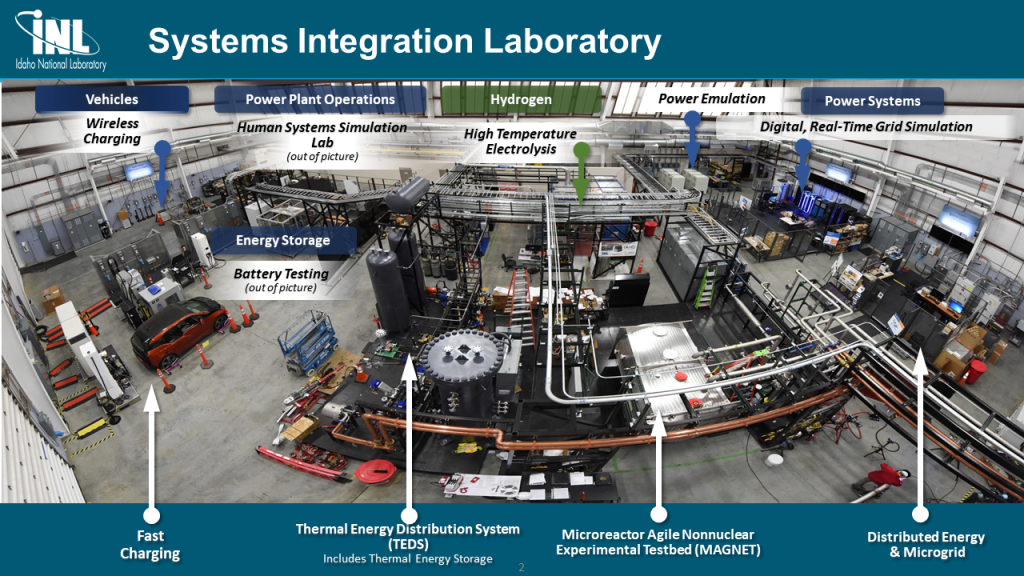Experimental Systems
The IES program focuses on research and development of tools and technologies to demonstrate multiple integrated energy systems that have a clear path toward commercialization.
The program’s experimental systems established a diverse, non-nuclear facility to support model validation and initial technology demonstration. This facility includes representation of multiple subsystems, both through virtual system integration (via real-time connections to test facilities at other DOE laboratories, academic institutions or industry) or physical integration with scaled demonstration hardware. It allows for demonstration and validation of specific technologies (e.g., components, subsystems), sensors, control architecture, integration hardware, data analytics and data management, and related cyber security approaches. This can reduce commercial risk prior to nuclear system demonstrations.
INL’s Energy Systems Laboratory includes electrically heated reactor emulation; thermal energy generation and distribution, including thermal energy storage; hydrogen generation via high-temperature electrolysis; grid emulation; and battery testing.
- Each of these subsystems can operate independently to support various programs. When connected into an IES, they form the Dynamic Energy Technology and Integration Laboratory (DETAIL). Additional components include chemical flow batteries and small-scale wind and solar generation.
- INL’s Power and Energy Real-Time Laboratory(PERL) connects in real-time with geographically dispersed facilities at INL, other laboratories, universities and industry via digital simulators.
- The Microreactor Agile Non-nuclear Experimental Test Bed (MAGNET) can provide up to 250 kilowatts of energy through controllable electrical heater elements within a microreactor test article.
- The Thermal Energy Distribution System (TEDS) adds 200 kilowatts of energy using controllable electrical heater elements to represent energy input of up to 450 kilowatts from a nuclear fission system. This energy can be stored in the thermocline energy storage system and conditioned for delivery to high temperature electrolysis or to other coupled systems that will be added to DETAIL in the future.

